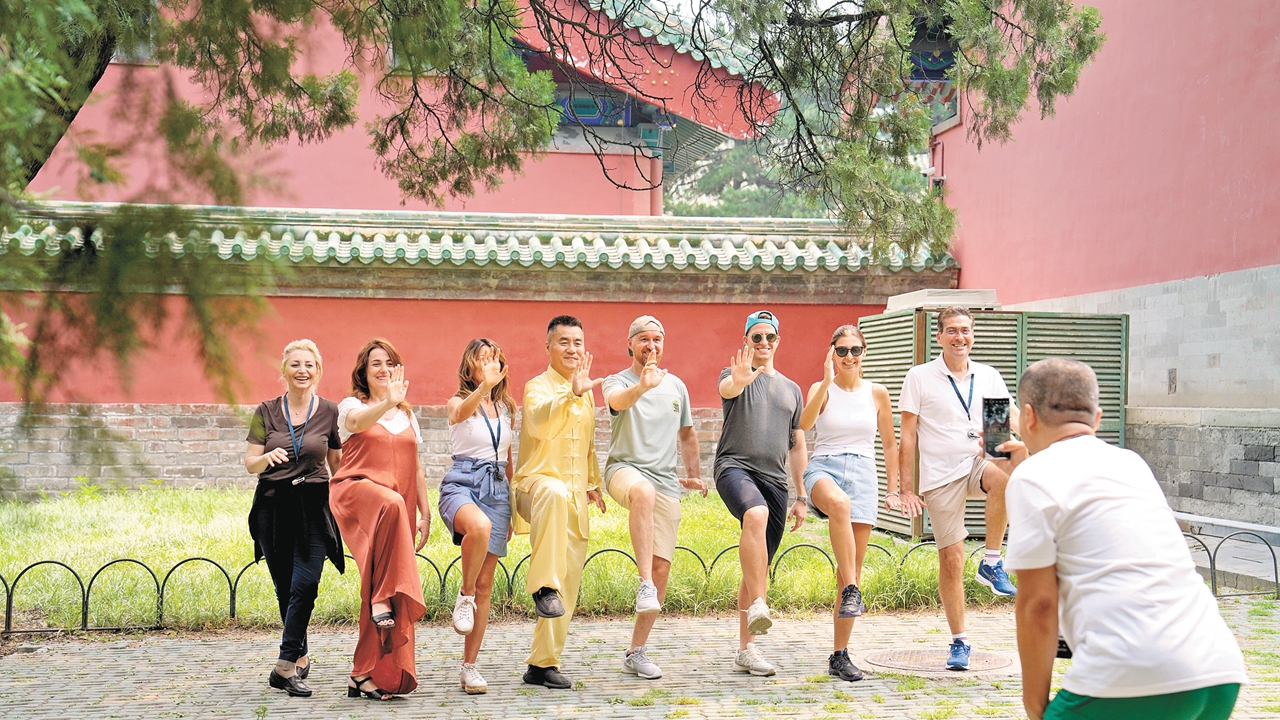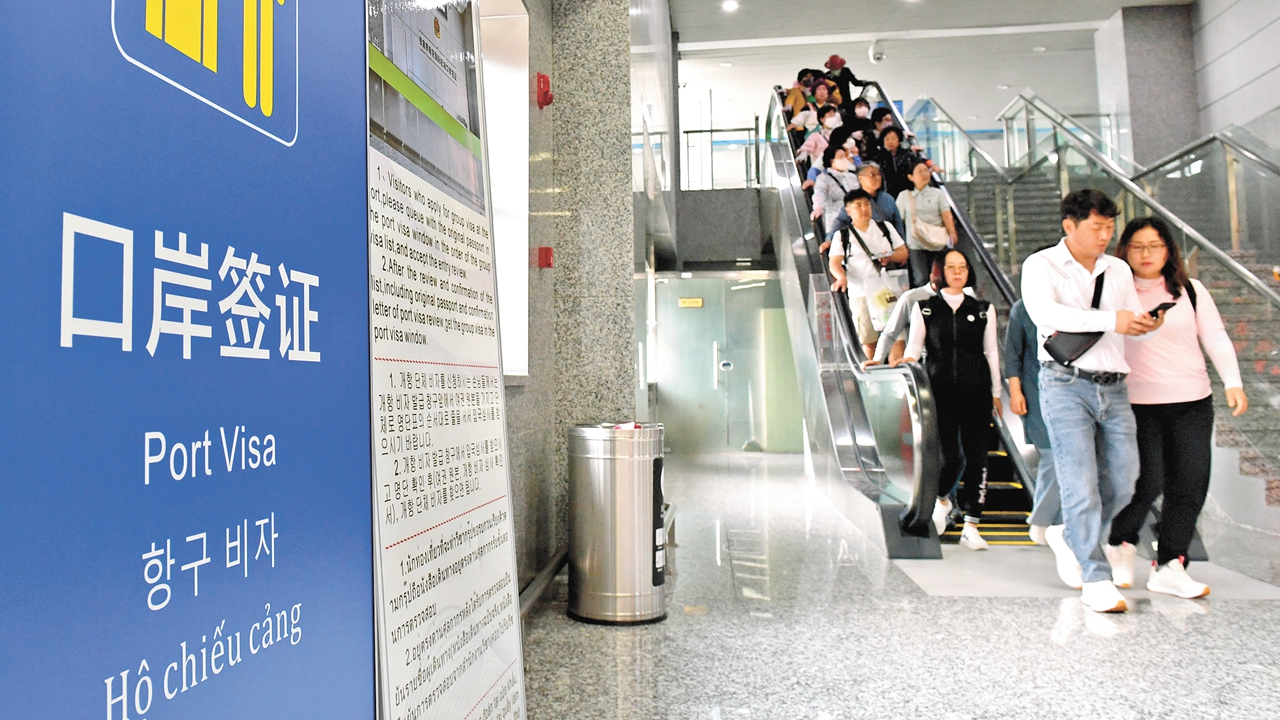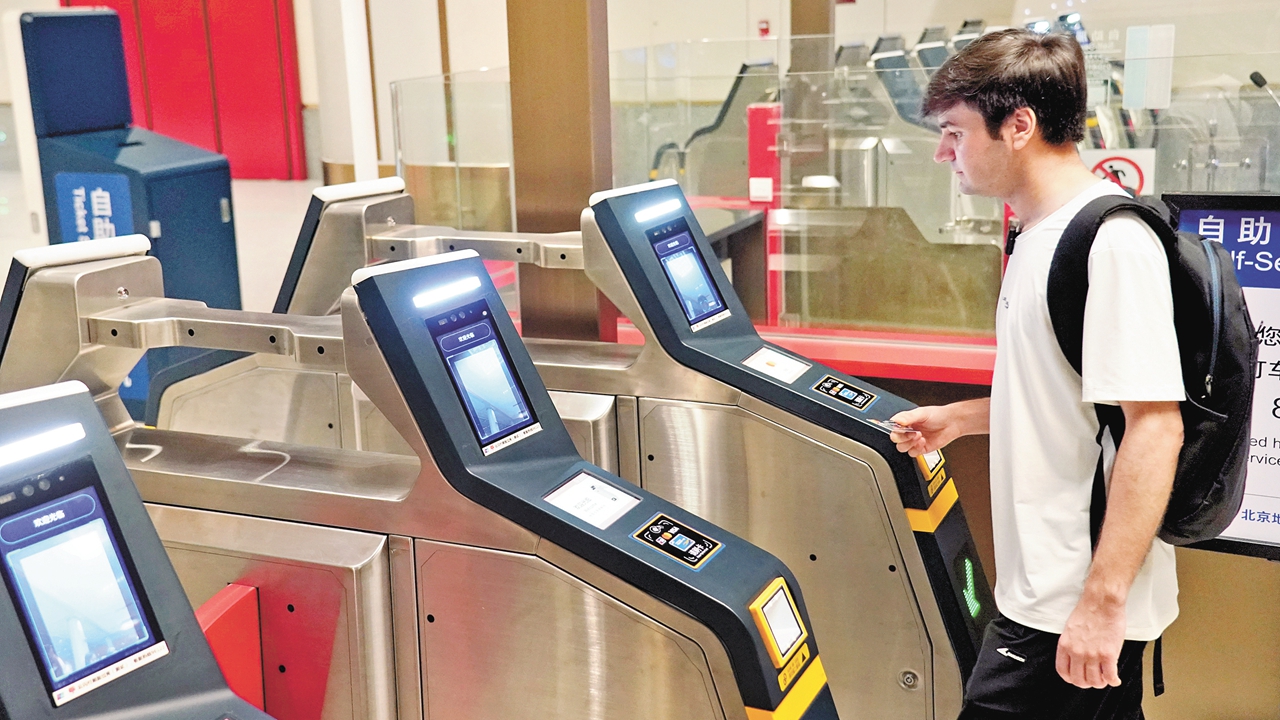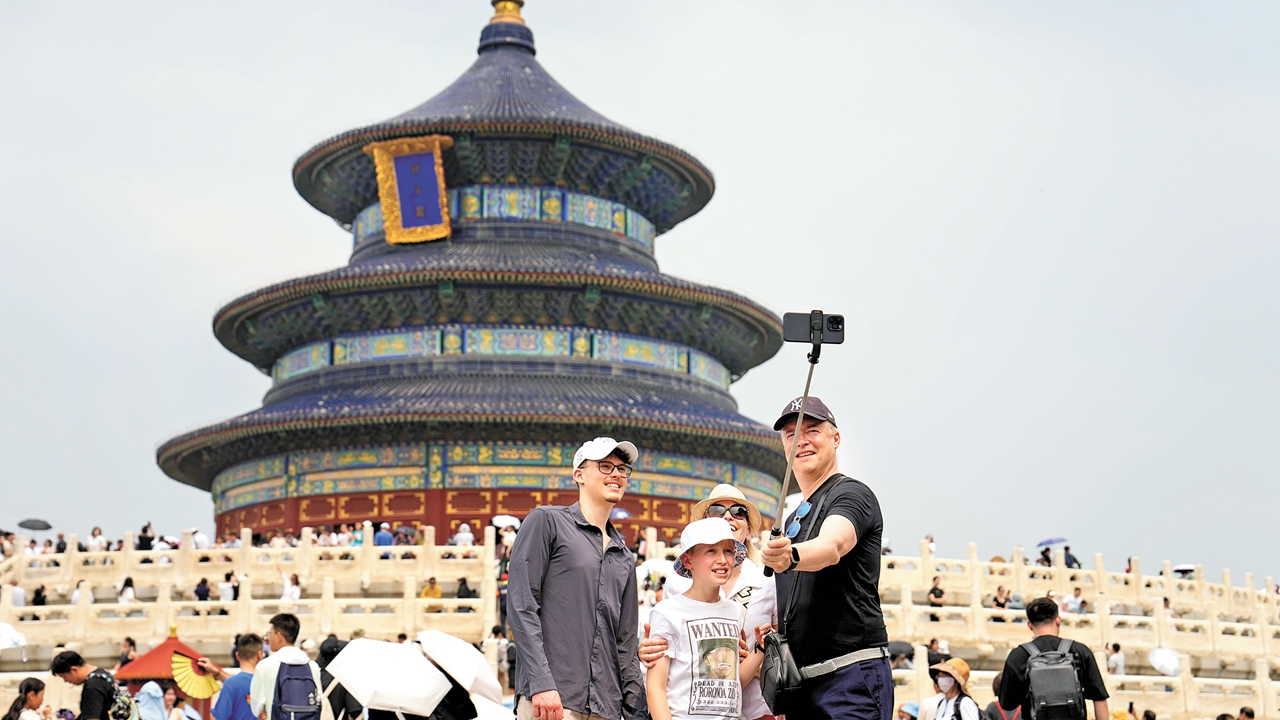New visa policies fuel a travel boom in China and beyond
Writer: | Editor: Lin Qiuying | From: | Updated: 2024-12-05
China's updated visa policies are fueling a new era of global exploration, making it easier for travelers to discover its rich cultural and natural wonders.
Whether strolling along Beijing’s willow-lined Forbidden City moat, marveling at the towering karst formations of Zhangjiajie that inspired the floating mountains in "Avatar," or soaking in the cyberpunk vibes of Chongqing, globetrotters are embracing opportunities for adventure and cultural connection across China.
Tourists from Italy pose for a group photo after practicing tai chi at Tiantan Park in Beijing in this July 9 photo. Photos from Xinhua
This travel surge is driven by the country’s expanded visa exemptions, which aim to boost international mobility in the post-pandemic era. Starting Dec. 1, 2023, visitors from France, Germany, Italy, the Netherlands, Spain, and Malaysia can enjoy visa-free entry for up to 15 days for business, tourism, family visits, or transit — a change designed to foster even greater global exchange.
Policy updates
With 38 countries now enjoying unilateral visa-free access to China, opportunities for meaningful exchanges and visits have significantly increased. As of Nov. 30, the maximum visa-free stay has been doubled to 30 days.
International travel to China has surged. In the third quarter of 2024 alone, inbound trips by international travelers exceeded 8.1 million — a 48.8% year-on-year increase. Notably, over 4.8 million of these visitors, accounting for 59%, traveled under the expanded visa-waiver program.

South Korean tourists arrive at the Zhangjiajie Hehua International Airport on a direct flight from Busan in this May 27 photo. Currently, there are five direct flight routes between Zhangjiajie and South Korean cities, with 52 flights per week.
“Usually, this would be a slower season for tourism, but my schedule has been packed — something I haven’t seen, even before the pandemic,” said Xia Chang, who has worked as a tour guide since 2016, while leading a British tourist through Zhangjiajie in central China’s Hunan Province.
Huang Songshan, a professor at Edith Cowan University, highlighted the role of tourism in fostering people-to-people exchanges. He noted that the spike in inbound visitors driven by China’s new visa-free policies could help “foster mutual understanding in an increasingly polarized world.”

An international tourist poses for a photo with a plush giant panda toy in Beijing in this Sept. 16 photo.
While many visitors marvel at iconic landmarks and gleaming symbols of economic success in cities like Shanghai, Guangzhou, and Shenzhen, a growing number are venturing off the beaten path to explore local traditions and everyday life.
For Gudrun Thorsdottir, from Iceland, exploring Shanghai meant venturing beyond typical tourist attractions — all the way to a bustling wet market. Captivated by the vibrant displays of produce and seafood, she marveled at the scene, even holding up a crawfish in amazement. Iceland was added to China’s visa-waiver program in early November, alongside eight other countries, including Slovakia, Norway, and Finland.
Local guides and tour operators are responding to this influx of curious travelers with more immersive experiences. Wei Ying, a seasoned tour guide, has introduced unique stops on her tours, such as the historic interiors of the Peace Hotel and the Shanghai Postal Museum, offering deeper insights into the city’s rich heritage.
Commitment to opening up
Experts have lauded China’s confidence, openness, and inclusiveness in its recent push for unilateral visa exemptions. “It sends a message that the world’s second-largest economy is determined to further open to the world,” said Yang Mingjie, president of the China Institutes of Contemporary International Relations.
The think tank noted the cascade effects of visa-free policies, saying these initiatives could potentially facilitate freer flows of trade, transportation, capital, and information across borders, thereby enhancing global economic connectivity.
In a sign of greater financial opening up, China has made mobile payments more accessible to international travelers and expats, who can now link Visa, Mastercard, and other major credit cards to local payment apps like Alipay and WeChat Pay. In October alone, in-person transactions made with foreign bank cards jumped by 184% from February, with their total value rising 150%.

James Patrick, from Canada, uses the contactless payment method for non-Chinese MasterCard and Visa card holders to pay for rail transit at the Xinshougang Metro Station in Beijing in this Sept. 13 photo.
The expanded visa waivers have been met with enthusiasm. During his visit to China in November, Prime Minister of the Slovak Republic (Slovakia) Robert Fico described the development as a significant boon for young people and entrepreneurs in his country.
“We are considering the possibility of launching direct flights between Slovakia and Beijing,” Fico told media. Passenger flights to and from China had recovered to 81.7% of pre-pandemic levels as of the first half of 2024, according to the Civil Aviation Administration of China.
Meanwhile, countries like France, Switzerland, and Hungary have eased or planned to ease visa requirements for Chinese nationals. Ireland has welcomed Chinese investment, while Singapore extended visa-free access to Chinese travelers earlier this year — a move analysts say reflects strong confidence in China.
On Nov. 8, the first day South Korea’s visa-free status took effect, over 200 South Koreans landed in Hangzhou, home of e-commerce giant Alibaba. A businessman surnamed Jeong credited the policy for making it easier to explore business opportunities in Yiwu, which is known as "the world’s small commodities supermarket.”
Bridging information gap
The lack of reliable information is a critical impediment to more Westerners visiting China, according to Clayton Boylan, senior business manager at the World Tourism Cities Federation. He noted that many Americans still view China through a lens frozen in the 1960s and 1970s.
Thanks to recent visa policy shifts, videos shot in China have started to challenge outdated perceptions on platforms like YouTube, TikTok, and X, revealing a country that contrasts sharply with what Western media has long portrayed.
In one clip from May, a vlogger named Alex Cage left his MacBook and cash unattended at a café in Shanghai for one hour. Despite ample opportunity, no passersby touched his belongings. “Everything is safe in China,” he said in the video, which has generated a lot of attention on YouTube.

International tourists pose for a photo at Tiantan Park in Beijing in this July 9 photo.
Many first-time travelers leave China bewildered by how such a vast country of over 1.4 billion people can be so efficient — from hailing cabs to punctual trains. They are also surprised by the cleanliness of the streets and public transportation, despite the constant hustle and bustle of large crowds.
The Ministry of Foreign Affairs has reiterated the country’s commitment to greater opening up. “We will continue refining our visa-free policies to enable more international friends to experience China,” said Tong Xuejun, an official of the ministry’s consular department.
As snow blankets the blue lakes in Jiuzhaigou, transforming them into a winter wonderland, and ice and snow sculptures take shape in a 1-million-square-meter park in Harbin, one thing is clear — no matter the season, a trip to China offers an escape from the ordinary. (Xinhua)